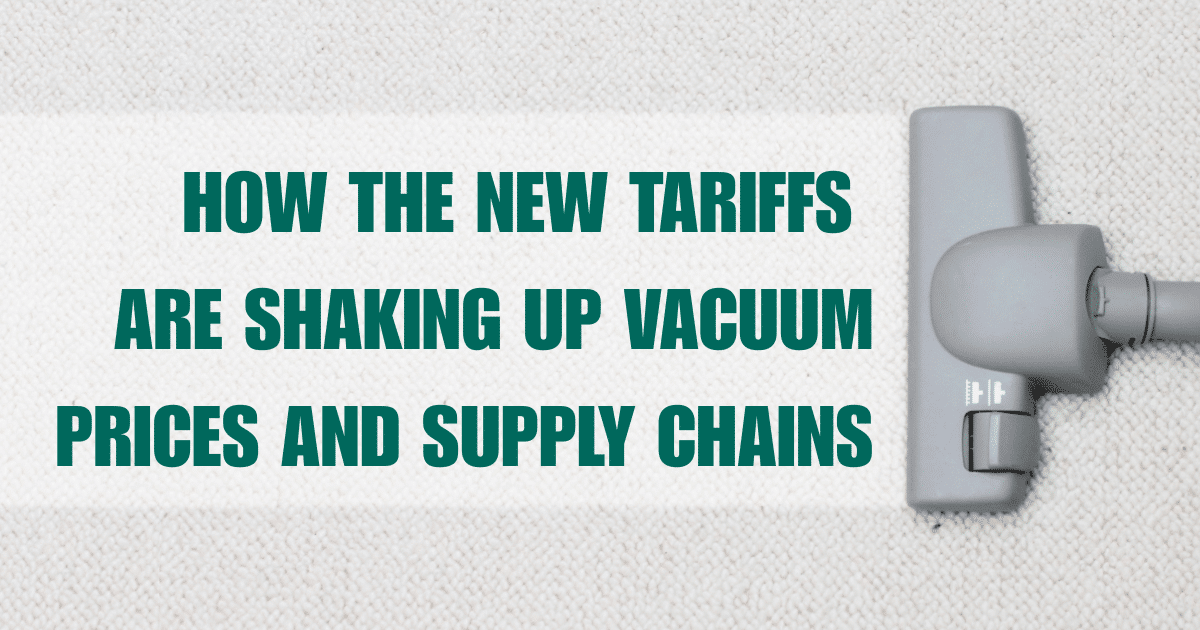In recent weeks, vacuum cleaner makers big and small have been scrambling in response to a sudden jolt from Washington: new U.S. tariffs, proposed by President Trump, aimed largely at goods from China. These fast-moving trade measures are already causing ripples in the vacuum industry. Companies like SharkNinja, Dyson, iRobot Roomba, and Roborock are reacting with everything from blunt public statements to behind-the-scenes supply chain shifts. Consumers are left wondering: Will my next vacuum cost more? Will certain models become hard to find? In this conversational rundown, we’ll break down the latest developments, what the major brands are saying, and what U.S. consumers can expect in terms of prices and product availability.
The Latest Tariffs: What’s Going On?
First, a quick recap of what tariffs we’re talking about. In early April 2025, President Trump announced a sweeping new round of import tariffs as part of his trade policy. This included hefty duties on a broad range of products – and it specifically hit Chinese imports hardest. At one point, though paused for now [nymag.com], the administration set a baseline 10% tax on all imported goods, with an additional 125% tariff on imports from China. [cnet.com] In simple terms, a product made in China could now face well over double its normal import cost due to tariffs. That’s a seismic increase. (For context, earlier trade-war tariffs in 2018-2019 were around 25% on many Chinese goods – this new 125% rate is on another level.)
These tariff announcements have been fast-moving. In fact, the White House tweaked the plan within days. On a Wednesday in mid-April, President Trump paused most of the new tariffs for 90 days – except those targeting China – effectively singling out China with the 125% rate while giving other countries a reprieve. [cnet.com] Then, just a couple of days later, the administration carved out some exemptions for certain tech products (though it’s unclear if those will stick.). The back-and-forth adjustments underscore how rapidly the situation is evolving. As CNET put it, “constant changes to the tariffs make it tricky” to even advise consumers on what to do. [cnet.com]
What’s clear is that Chinese-made goods are squarely in the crosshairs of these policies. And that matters a lot for the vacuum cleaner market, because a huge share of vacuums (from high-end robot vacuums to basic stick vacs) are manufactured in China or rely on Chinese-made components. Even many “American” or European brands source parts or entire products from Chinese factories. Now those vacuums could suddenly incur massive extra costs at the border.
Why Vacuum Makers Are Worried
For vacuum manufacturers, these tariffs pose an immediate dilemma: either swallow the extra cost (hurting their profits) or pass it on to consumers via higher prices – and risk hurting sales. Neither option is attractive, so companies are looking for creative ways to respond. Let’s go through how some of the major players are handling it:

SharkNinja (Shark Vacuums & Ninja Appliances)
SharkNinja, [sharkninja.com] the company behind the popular Shark vacuums (and Ninja kitchen appliances), has been one of the most outspoken so far. CEO Mark Barrocas bluntly stated that Trump’s tariffs won’t magically bring vacuum manufacturing back to the U.S. In his view, it’s just not practical to start building something like a Shark vacuum entirely on American soil on short notice. “Our industry doesn’t exist in the U.S.,” Barrocas told Bloomberg News, [bloomberg.com] referring to the complex network of suppliers and factories needed to make small appliances. In other words, the ecosystem of parts suppliers, electronics manufacturing, and assembly for things like vacuums and blenders is firmly rooted in Asia (particularly China). You can’t recreate that overnight in America just because tariffs went up.
So what is SharkNinja doing instead? Barrocas said the company will “shuffle the supply chain to dodge those fees.” Essentially, SharkNinja is fast-tracking its plans to shift production out of China to other countries that aren’t subject to the 125% tariff. The company was already in the process of diversifying manufacturing (a trend that actually began during the last trade war). Now it’s likely doubling down on that strategy. While SharkNinja hasn’t publicly detailed all the locations, industry experts suggest countries like Vietnam, Malaysia, or Mexico could be alternate manufacturing hubs. The goal is to reroute production so that Shark vacuum cleaners and Ninja blenders can be imported without incurring the China tariff.
The bottom line for Shark customers: SharkNinja is trying hard to avoid massive price hikes by changing where its products are made. In the near term, though, there could still be some turbulence. As the shift happens, there might be short-term impacts on product availability – for example, certain Shark models might run low in stock if the company delays Chinese shipments before a new factory comes online. And while SharkNinja hasn’t announced across-the-board price increases yet, they hinted that absorbing all the costs isn’t feasible long-term. (Many smaller appliance brands have already emailed customers about price hikes; one cookware maker even warned of “periodic stock-outs” of some products due to tariffs. [nymag.com] Don’t be surprised if later this year some Shark vacuum prices creep up a bit, but the increase may be more modest than the raw tariff would suggest, thanks to these supply chain maneuvers. In fact, SharkNinja remains optimistic about its sales – reportedly still expecting growth in 2025 – indicating they believe they can navigate this storm without losing customers.
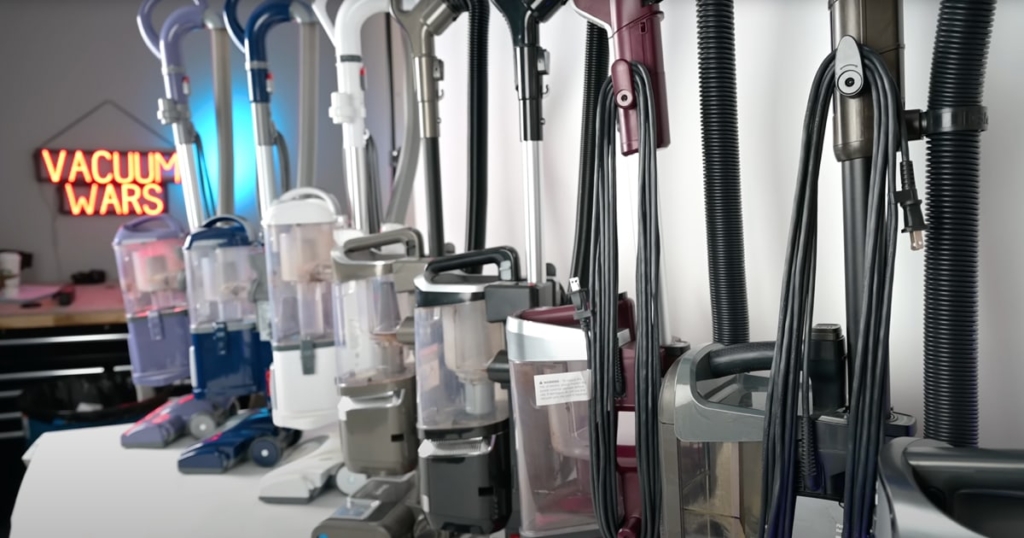
Dyson
What about Dyson [dyson.com]– the high-end vacuum brand known for its pricey cord-free vacs and sleek designs? Interestingly, Dyson might be less immediately affected than some rivals. Dyson is a UK-based company, and for years it has manufactured its vacuum cleaners in Southeast Asia (like Malaysia and Singapore) rather than in mainland China. Because of that, Dyson’s products for the U.S. market aren’t directly subject to the extra 125% China tariff. They will, however, still get hit by the general import tariffs (for example, that baseline 10% on all imports, if it comes into effect broadly). So Dyson isn’t completely off the hook – their costs will rise somewhat – but they’re not facing a more-than-double cost shock like a China-made product would.
So far Dyson hasn’t made loud public comments about the tariffs. The company tends to be tight-lipped about its supply chain. There have been no official Dyson press releases about price changes at the time of writing. This silence could mean a few things. It might suggest Dyson is confident it can weather the tariffs without major changes – perhaps by absorbing some costs or making small pricing adjustments quietly. Dyson products already have a hefty markup, which gives the company a bit of cushion. (That $600 Dyson vacuum has a lot of margin built in, after all.) It’s also possible Dyson is waiting to see if the situation changes before reacting. Given that the tariff rollout has been in flux (with exemptions and pauses being discussed), Dyson might prefer to avoid any hasty moves.
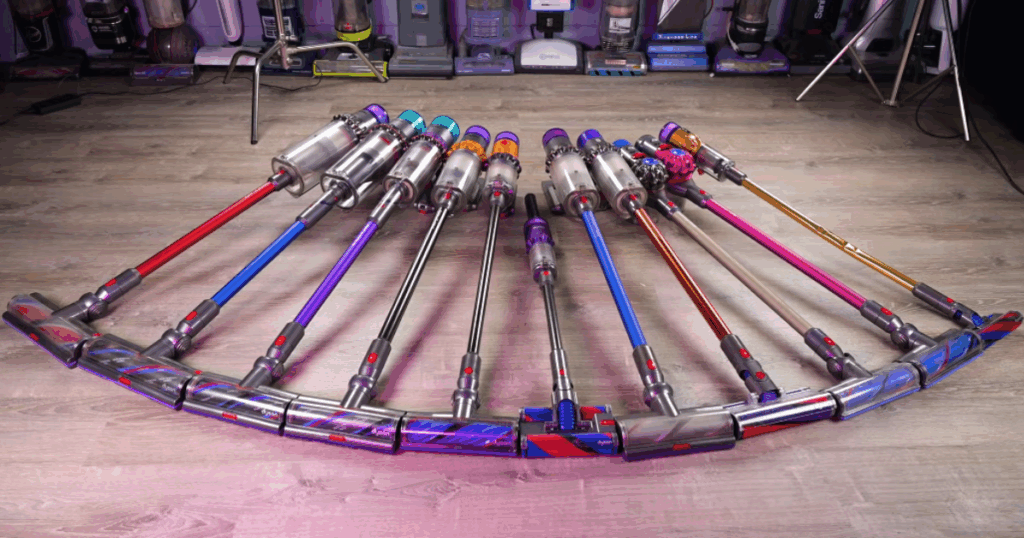
For U.S. consumers eyeing a Dyson, the expectation is not that prices will skyrocket overnight, but keep an eye out. If tariffs drag on, Dyson could eventually nudge up U.S. prices on newer models or reduce the frequency of sales. On the positive side, Dyson doesn’t seem to be facing any immediate supply shortages – their production is already outside China – so Dyson vacuums should remain readily available. In fact, Dyson could even see a competitive advantage in the short term if Chinese-made rivals become more expensive due to tariffs. That said, no vacuum brand is truly immune to a trade war – the global nature of electronics means Dyson too will feel some cost pressure (motors, batteries, and chips in its vacuums may come from various countries, including China). A Dyson spokesperson hasn’t weighed in publicly, but it’s a fair bet the company is monitoring the situation closely while its customers thankfully aren’t seeing dramatic changes yet.
iRobot (Roomba)
The situation is a bit different – and more dire – for iRobot [irobot.com], the American maker of the Roomba robot vacuums. iRobot has been struggling financially of late, and these new tariffs are hitting at a really tough time for them. In fact, iRobot explicitly called out the tariff turmoil as a threat to its business’s survival. In a March 2025 statement (as the tariff plans were starting to unfold), the company said: “Given macroeconomic and tariff-related uncertainties, there is substantial doubt about iRobot’s ability to continue as a going concern.” [reuters.com] That’s an extraordinary thing to admit publicly – basically saying we might not make it – and it shows how seriously they view the tariff impact.
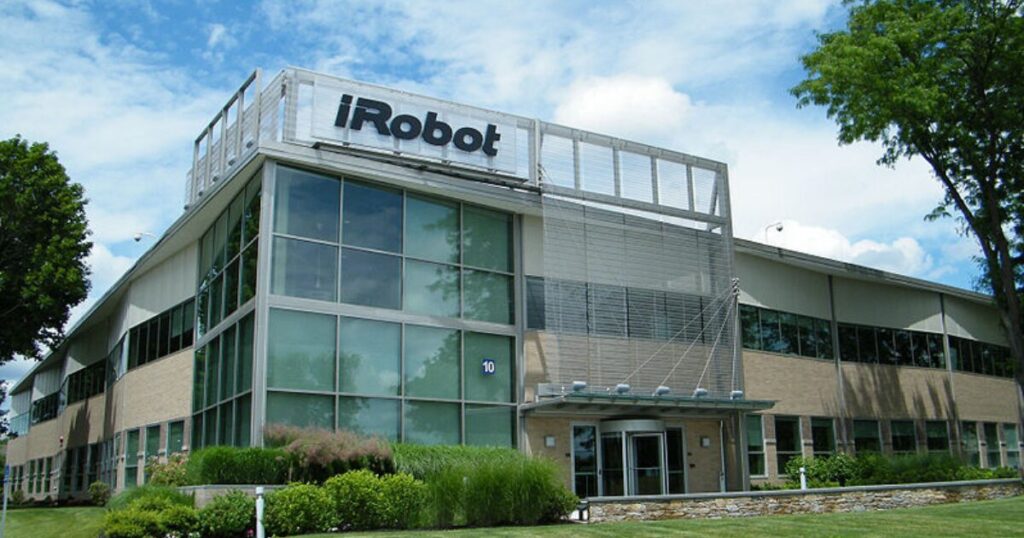
Why is iRobot so vulnerable? A big reason is competition and cost. In recent years, iRobot has been losing ground to a flood of lower-cost robot vacuum rivals from China (brands like Ecovacs, Roborock, Eufy, etc.). Those competitors undercut iRobot on price while adding fancy features, putting iRobot in a bind – it couldn’t easily raise its own prices without losing even more market share. [reuters.com] Ironically, the new tariffs are a double-edged sword for iRobot. On one hand, all those Chinese rival vacuums now face huge import tariffs, which likely means their prices to U.S. consumers will jump up. That could level the playing field a bit for iRobot – suddenly Roombas and the Chinese models might be closer in price, which could drive some cost-conscious shoppers back to Roomba. In fact, we might see some Chinese brands temporarily pull back from the U.S. market if the tariffs make them too expensive to compete. (More on the Chinese brands in a moment.)
On the other hand, iRobot itself is not completely free of China in its supply chain. Historically, Roombas were made in China as well. The company did move a lot of its production to Malaysia a few years ago to mitigate the last round of tariffs, but it may still source some components from China or be affected by the general import taxes. Plus, iRobot as a business is in a weak position with slim profits, so any cost increase hurts. The company just launched a slate of new Roomba models this year, and it’s now trying to decide whether it can price them attractively or if it must pass on higher costs to consumers. So far, iRobot hasn’t announced immediate price hikes, but given their financial warning, it would not be surprising if new Roomba models debut at higher price points than previous generations. They might also produce fewer units if they’re unsure people will pay more, which could mean select Roomba models might be harder to find or on backorder later this year.
In short, iRobot is in a precarious balancing act. They’re hoping the tariff situation doesn’t drag them down before they can potentially benefit from their competitors’ struggles. If you’re a Roomba fan, keep an eye out for any promotional communications – iRobot may try to maintain sales by offering limited-time deals before any price adjustments. But the cloud hanging over them is real: the company openly cited tariffs as a factor casting “substantial doubt” on its future, [reuters.com] which shows just how much pressure they’re under.
Roborock, Ecovacs, and Other Chinese Brands
Now, let’s talk about the Chinese robot vacuum makers, like Roborock and Ecovacs (and a bunch of smaller names you often see on Amazon). These companies have been wildly popular for offering high-tech robot vacuums at relatively affordable prices. But that formula – build in China, keep costs low – is exactly what’s threatened by the new tariffs. A tariff of 125% is basically a price-doubling tax on Chinese-made robot vacuums. For example, imagine a Roborock model that normally retails for $500 in the U.S. If that unit was imported after the tariffs, the added tax could, in theory, push its import cost to around $1,125 (!), which is unsellable.
What are these companies doing? Publicly, we haven’t heard much in terms of press releases from Roborock or Ecovacs about the U.S. tariffs (not surprising – foreign firms often stay quiet on U.S. political matters). But behind the scenes, it’s safe to say they’re in firefighting mode. U.S. retailers and distributors of these vacuums are likely putting orders on hold rather than pay the exorbitant fees. In fact, we’ve seen reports from other industries that when the 145% tariff (a rate floated earlier) hit, many U.S. buyers simply paused orders from China. [reuters.com] It’s reasonable to assume the same is happening with robot vacuums: shipments are being delayed or rerouted while companies figure out a plan. This could lead to short-term product shortages. If you notice your favorite budget robot vacuum is out of stock this spring, the tariff turmoil could be a reason. Some importers might be waiting out the 90-day pause period to see if tariffs get adjusted before restocking. Others might be rushing to find alternate manufacturing in countries like Vietnam or Indonesia. There’s even chatter that some Chinese companies could explore assembling units in Mexico to classify them as non-Chinese origin (a workaround some firms have used in past trade disputes).
For U.S. consumers, the immediate expectation should be higher prices on Chinese-brand vacuums – if you can find them. Many of these brands will have no choice but to raise their U.S. prices significantly or else accept razor-thin (or negative) margins. We might see new model launches from these companies being delayed or priced much higher than their predecessors. For example, if a new Ecovacs model was planned at $599, it might debut much higher if it’s subject to the tariff. Some smaller brands may temporarily pull their products from U.S. listings entirely until they can figure out a supply route that avoids the tariff. In essence, the attractive price-performance equation of Chinese robot vacuums is at risk. The next Roborock you buy could cost a lot more than the last one – not because the company suddenly got greedy, but because the tariff burden is so extreme.
It’s worth noting that the Chinese government is not taking this quietly either. Beijing has hit back with its own retaliatory tariffs on U.S. goods (even naming products like U.S.-made vacuum cleaners on their list of targets for counter-tariffs. [reuters.com] There were even some propagandistic videos in China featuring dancing robots and beleaguered consumers, mocking the U.S. tariffs and their fallout. [reuters.com] It’s a bit of a trade war tit-for-tat. But for the Chinese vacuum makers specifically, the U.S. market is important, and they will try to stay in it if possible. We might see creative promotions (perhaps big “tariff discount” sales funded by the companies to offset the tax, or more bundling of products) to entice consumers despite higher base prices. Until a longer-term solution (like new factories outside China) comes online, though, expect Chinese-branded vacuums to be one of the categories most visibly affected by these tariffs in terms of price jumps.
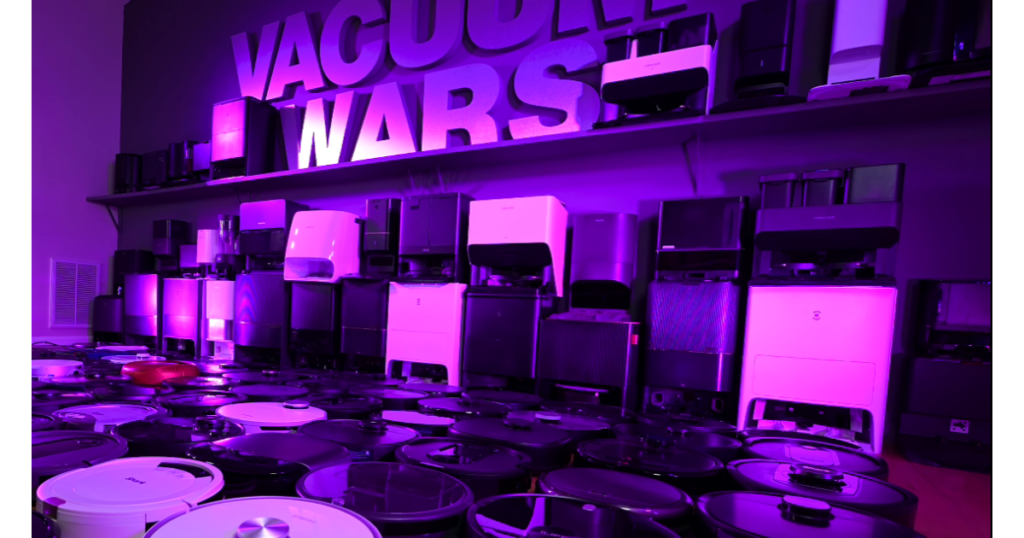
Other Brands (Bissell, Hoover, etc.)
We shouldn’t forget other vacuum brands like Bissell, Hoover, Eureka, and so on. Many of these are legacy brands that outsource a lot of manufacturing to China as well. They haven’t been in the headlines, but they’re certainly not immune. For example, Hoover (owned by Techtronic Industries) and Eureka likely produce budget vacuum models in Chinese factories. Thus, they’re facing the same cost spike on those imports. While we haven’t seen public statements from these companies in the press, it’s a safe bet they are pursuing supply chain shifts akin to SharkNinja’s strategy. In fact, during the previous tariff rounds a few years ago, large appliance conglomerates quietly started moving some production to Vietnam and other countries. So behind closed doors, brands like Bissell and Hoover are probably expediting any plans to source from outside China.
From a consumer perspective, mid-range vacuums from these brands may gradually creep up in price or see fewer discounts. If a vacuum that used to sell for $150 now has $30 of tariffs tacked on, the manufacturer might raise the retail price to $179 or $199 over the next few months to cover it. Retailers like Walmart and Target will also have to decide whether to swallow some of the cost or pass it fully to consumers. It may vary by model and brand. We could also see some models quietly disappear if they become unprofitable – for instance, a super-cheap corded vacuum that can’t accommodate the tariff margin might just be discontinued in the U.S. market. On the flip side, if some of these companies already have factories in, say, Mexico or Vietnam (for example, certain Hoover and Hart brand vacuums have been made in Vietnam recently), those product lines will become the focus for U.S. shelves, since they’re tariff-safe. The key point is that virtually every vacuum brand with overseas manufacturing is re-evaluating its supply chain right now.
What U.S. Consumers Can Expect
Given all this, let’s boil down what it means for someone looking to buy a vacuum in the U.S. in the coming weeks and months:
- Higher Prices Seem Inevitable: Unfortunately for deal-hunters, the consensus among economists is that these tariffs will drive up prices on most consumer tech and appliance products over the coming year. [cnet.com] Vacuums are no exception. We’re already seeing some price movement in the market. For instance, many electronics and gadget prices have started inching up as current inventory sells out. A price-tracking article on New York Magazine’s Strategist noted that even during the tariff “pause,” retailers were adjusting prices upward on devices, anticipating higher costs ahead. In one example, a popular Roborock robot vacuum-mop combo jumped from a sale price of $600 back up to $660 right after tariff news hit. [nymag.com] That suggests the days of steep discounts on Chinese-made vacuums might be numbered. If you’ve been eyeing a particular model and it’s in stock at a good price now, it might not be a bad idea to snag it sooner rather than later. Several brands have literally emailed customers with messages like “buy before prices go up” – one lunchbox maker even gave a promo code “BEFORETARIFFS” to let shoppers lock in old prices for a final weeknymag.com] We could see vacuum makers do something similar (flash sales or emails warning of upcoming increases).
- Short-Term Shortages and Delays: Beyond higher price tags, there’s the possibility of product shortages or delays. When tariffs make imports super expensive, sometimes companies hold off on importing at all. There is evidence of U.S. importers freezing orders from China because of the new tariffs. [reuters.com] – essentially waiting in hopes the trade situation improves or until they can re-route production. For consumers, that could translate to certain vacuum models being out of stock for a while. If a specific model is “Imported from China” (you can often find this on the box or website), its next shipment might be uncertain right now. Retailers might run through existing inventory and then not restock as quickly. We might also see new product launches postponed. (For example, if a new model was set to debut this summer but the company can’t afford to import it at the tariff rate, they might delay the launch or ship it in limited quantities.) On the extreme end, if this trade war escalates further, it could even mean holiday season shortages for some popular vacuums – though manufacturers are hopefully finding workarounds well before then.
- Supply Chain Shuffle: One phrase we’re hearing a lot from companies is “supply chain diversification.” In plain English, that means your vacuum might soon be coming from a different country than it would have a year ago. Manufacturers are expediting moves to alternate factories outside China to dodge the tariffs. [linkedin.com] This won’t be visible to most consumers – a Shark vacuum made in Vietnam looks and works the same as one made in China – but it’s an important behind-the-scenes change. Once those shifts happen, the upward pressure on prices might stabilize. However, such moves take a bit of time (months at least, if not a year to fully ramp up). So in the interim, we’re in a rocky adjustment period. The tariffs were meant to encourage making things in USA, but as we’ve seen, companies like SharkNinja say building an American factory for vacuums isn’t realistic in the short term. [linkedin.com] Instead, they’ll build in other low-cost countries. For consumers, the hopeful news is that by perhaps later in 2025 or 2026, a lot of vacuums sold in the U.S. might come from tariff-free locales, which could prevent long-term price inflation beyond an initial bump.
- Who’s Absorbing the Cost? Another factor affecting prices is whether companies decide to eat some of the tariff cost to stay competitive. Larger companies with healthy profit margins (like Dyson) might absorb a 10% hit without immediately jacking up sticker prices. Others, like iRobot, frankly can’t afford to absorb much – they will have to either raise prices or sacrifice something else. Some retailers might also absorb a portion to avoid scaring away customers. For example, a big retailer could accept slightly lower margin on a vacuum cleaner just to keep the price point attractive, at least temporarily. So the effect on any given product’s price can vary. It might not be a simple +125% on the tag; more likely you’ll see moderate increases spread out over many products. One economist estimate cited by CNET was that for many high-end electronics, tariffs could add $50 to $150 on price. [cnet.com] Vacuums might see similar absolute dollar increases depending on the base price. A $1000 robot vacuum might jump to $1200, whereas a $200 vacuum might go to $250. These are hypotheticals, but they illustrate the scale – significant, but not making products completely unattainable in many cases.
- Possibility of Deals Before Hikes: In the very near term, one interesting phenomenon is that some brands or retailers might run sales to clear out current stock that was imported pre-tariff. If they have a warehouse full of vacuums that already landed in the U.S. before the tariff hit, they could sell those at normal prices (or even discounted) until that inventory is gone. Once they have to import the next batch under the new tariffs, then the price goes up. So consumers might see a weird scenario where there are actually some decent deals or steady prices in the immediate weeks, followed by noticeable increases later in the year. It’s a bit of a “calm before the storm” for certain items. Keep an eye on official announcements: several companies have already basically said buy now if you want to avoid upcoming price increases. [nymag.com] If a vacuum you want is currently not affected and on sale, that message between the lines is to consider acting now.
- Long-Term Outlook – Uncertain: The big question is, how long will this tariff regime last? If trade negotiations lead to an easing or removal of tariffs, prices could normalize again (perhaps even come back down if companies are optimistic). However, if tariffs stay in place for the foreseeable future, the changes we discussed – higher prices, new supply chains – will become the “new normal.” The Trump administration’s bet is that over time, production will shift to the U.S. or at least outside China, and that could eventually create more stability. In the meantime, consumers will foot some of the bill. As one trade expert noted, the modern global economy means almost no device is unaffected by these tariffs – “I doubt there is any device that will be unaffected by the latest tariff news,” said a CNET home-tech editor about smart home gadgets. [cnet.com] Vacuums, being both electronic and part of the home appliance category, definitely fall under that umbrella.

Wrapping Up: Brace for Changes at the Vacuum Aisle
To sum up, the latest U.S. tariffs – especially the China-focused duties – have thrown the vacuum cleaner industry into a state of rapid adjustment. Major manufacturers are reacting in real-time. SharkNinja has made it clear it’s not moving production to the U.S. but rather moving out of China as fast as it can. [linkedin.com] Dyson is relatively insulated and playing a wait-and-see game, likely hoping to hold prices steady for now. iRobot is sounding alarm bells about its viability in this high-tariff environment, [reuters.com] even as it also stands to regain some competitive edge if Chinese robots get pricier. The Chinese brands like Roborock and Ecovacs are facing perhaps the toughest challenge – figuring out how to keep selling to Americans when their cost structure just blew up overnight. All of this is unfolding against the backdrop of a brewing global trade war, with talk of retaliatory strikes (the EU even floated tariffs on American-made vacuum cleaners in response to Trump. [reuters.com] It’s a lot to digest.
For the U.S. consumer, the key takeaway is: don’t panic, but do prepare. If you need a new vacuum, budget a bit more money for it than you would have a year ago. Be aware that some models might be temporarily out of stock or discontinued as companies rejig their lineups. You might notice your favorite vacuum brand emphasizing new manufacturing origins (like “Made in Vietnam” stickers becoming more common). And keep an eye on communications from these companies – many are trying to be transparent, emailing customers or speaking to media about what to expect. They know it’s a fast-moving issue and that clarity builds trust. The situation is evolving by the week, but we’ve gathered the most recent statements and expert insights to give you a clear picture of where things stand right now.
In this trade standoff, vacuum cleaners have surprisingly found themselves in the crossfire of geopolitics. The good news is that companies are not sitting idle – they’re adapting quickly. The bad news is that such adaptation comes with costs that, one way or another, end up affecting consumers. As shoppers, we should be prepared for a bit of sticker shock in the vacuum aisle and possibly less choice in the short term. The hope is that by later this year, supply chains will have adjusted enough to restore some normalcy – albeit likely at a somewhat higher price baseline than before.
